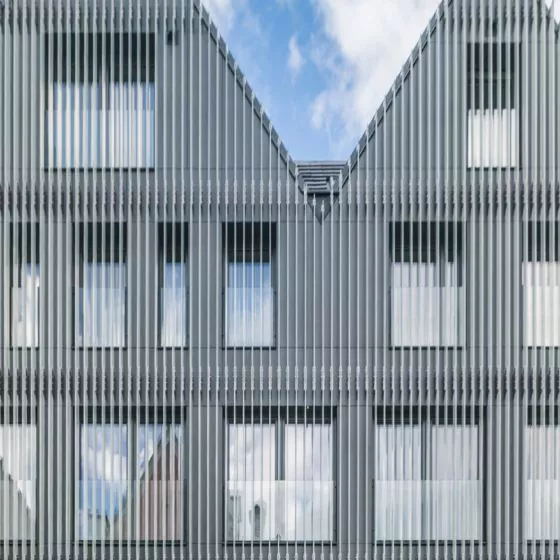Lukasz Dmowski won the first prize in the NIAiU competition entitled "The Common Space is a Value. "Shared space is a value". His thesis entitled. "Estate inscribed in the landscape as an attempt to create a pro-social and pro-ecological society in Poland," written under the supervision of Dr. Krystyna Solarek at the Faculty of Architecture of the Warsaw University of Technology, was appreciated by the jury of the competition in the design category.
The idea of the work was to create a project for a pro-social and pro-ecological settlement in Poland, and the village of Regula, near Warsaw, was used as a sample location. Lukasz Dmowski's diploma addresses the general problems that determine the need to erect environmentally friendly settlement units. The author draws attention to threats to the environment, pro-environmental solutions, the way of shaping urban structures and relationships within society. The work takes into account, not only the design of the settlement in terms of communication, technical and structural solutions, but also looks at individual human needs and conditions for functioning in civil society.
The design of the settlement in Reguly
© Lukasz Dmowski
model settlement
Analyzing cultural, historical and climatic factors, the author proposed solutions that best fit with Polish specifics and financial resources, creating a model settlement in Reguly. The area was chosen for its good location, suitable distance from the city and proximity to nature and water. The proposed settlement promotes pedestrian and bicycle transportation, keeping automobile traffic to a minimum.
Car traffic within the estate has been reduced to a minimum
© Lukasz Dmowski
private and common space
The division of the estate's space is not limited to the slogans "public" and "private," but treats them with a certain gradation. Private areas are correspondingly small, which significantly reduces the cost of their purchase. The money thus saved can be invested in environmentally friendly technologies. Small areas are compensated for by large community spaces accessible from the fronts or backs of lots, allowing for neighborhood integration. Fully public spaces include a central plaza, a chapel and a library. The author has also included housing for seniors built near the gardens and greenhouses, as well as close proximity to the kindergarten. Each of these places can be reached via scenic streets, along the way meeting smaller groups of neighbors gathered around their community zones.
Greenery and division of space in the estate
© Lukasz Dmowski
customized houses
The estate includes different types of terraced houses: small ones for families with children, houses for families with many children, and experimental, fully-embanked houses in an embankment. The premise of the project is to use the buildings for a certain period of time - a family enlargement results in a change of premises.
sample types of houses
© Lukasz Dmowski
The buildings are divided into several groups, and each house, despite the application of a certain unification, also retains individual characteristics.
In addition to basic public buildings, the estate also includes office buildings and commercial premises, which in the eastern part of the estate provide a buffer from the busy street.
ecological technology
As a source of energy, the author proposes a combined heat and power plant supplied with gas from the municipal grid and biomass briquette, a system of collectors and heat exchangers in the houses. In addition to high-tech solutions, the project also includes solutions based on proper exposure to the world's sides, the use of retention tanks and green formations. Lukasz Dmowski noted that every architectural and urban planning decision has an impact on the fauna and flora, the level of cooperation between residents and the individual budget.
technological solutions
© Lukasz Dmowski
The estate has an experimental character - the special accentuation of the different location of plots and houses in relation to the world sides and streets proves that it is possible to introduce pro-ecological and pro-social solutions in any layout, even the least favorable one. Good layout and spatial connection both within the house and public areas positively affect the quality of life.
Lukasz Dmowski's work also received an honorable mention in the PUM: Space of users and residents competition. We published the results of the 2nd edition of the NIAiU competition here.
compiled by {tag:AuthorAiB}
illustrations courtesy of Lukasz Dmowski




























































